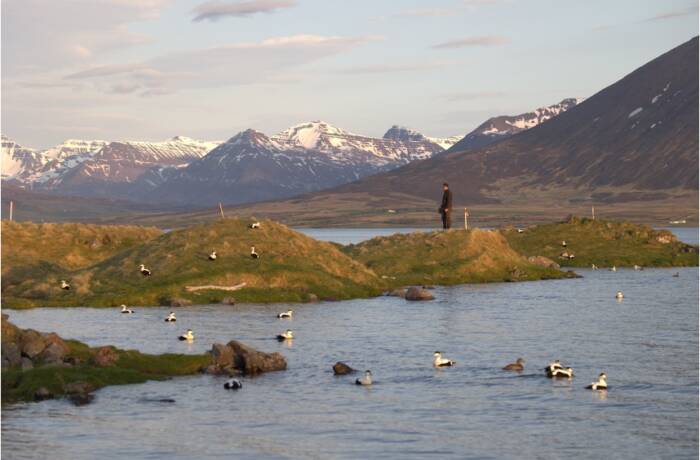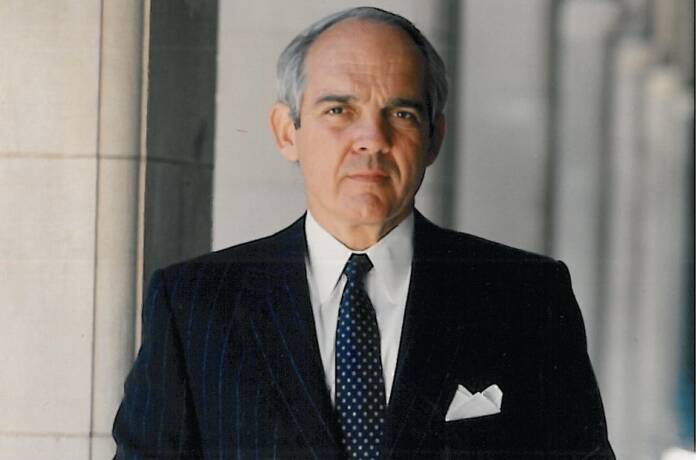
Château Quintus, so named as the “fifth child” of the Domaine Clarence Dillon family group
From Bordeaux to Paris and back again, Domaine Clarence Dillon, under the stewardship of HRH Prince Robert of Luxembourg, is delivering two of those most signature luxuries of French life, haute cuisine and Haut-Brion – and more besides, discovers Anna Tyzack
At Le Clarence, just off the Champs-Élysée, in the golden triangle of Paris, the staff are used to seeing familiar faces: not only the actors and politicians who dine there, but the guests who keep coming back. One distinguished French couple returns two or three times a week to enjoy haute cuisine and traditional service à la française in château- like surroundings; afterwards, they head back to their apartment to dance. So successful is head chef Christophe Pelé in recreating the French art de vivre, that Le Clarence, which opened in 2015, won two Michelin stars in one year, and in 2022 was honoured as the second finest restaurant in France, with a global ranking of 28th, in the World’s 50 Best Restaurants list.
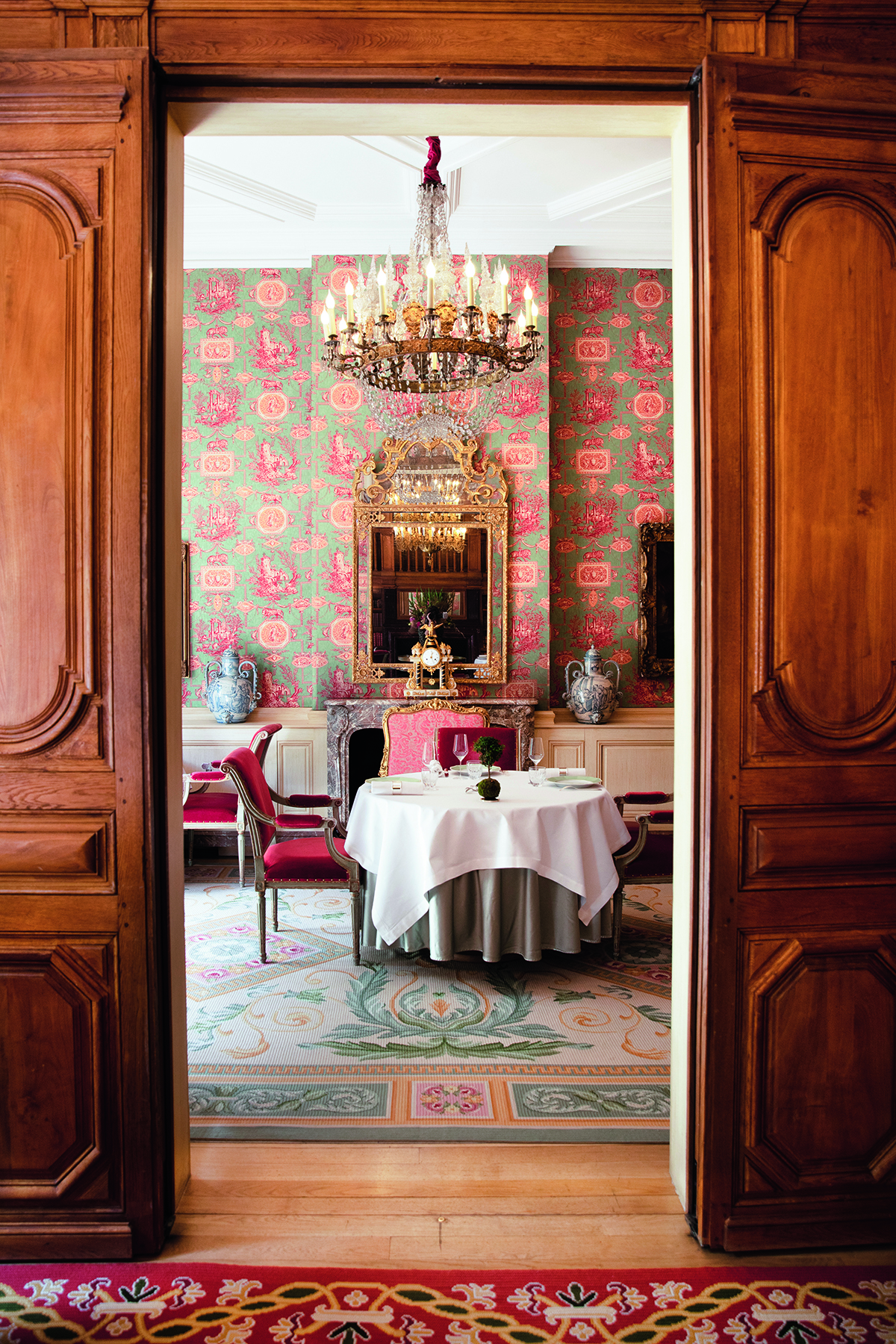
The group’s Le Clarence, which has won two Michelin stars and is ranked 28th in the World’s 50 Best Restaurants list
Le Clarence echoes the tastes and spirit of its founder, HRH Prince Robert of Luxembourg, whose great-grandfather, Clarence Dillon, a Harvard-educated banker and Francophile, revived the fortunes of Château Haut-Brion, a Grand Cru on Bordeaux’s Left Bank, in 1935. The group also includes Château La Mission Haut-Brion, bought by Prince Robert’s mother, Joan Dillon, Duchess of Mouchy, in 1983.
Follow LUX on Instagram: luxthemagazine
Prince Robert is devoted to his family legacy and became group president in 2008. Like his ancestors, the prince knows that the best way to preserve it is to innovate. Hence his decision in 2011 to expand the repertoire by acquiring a property now known as Château Quintus (meaning fifth in Latin, as the group’s fifth child), a Right Bank wine estate in the UNESCO World Heritage Site of St-Émilion, and in 2015 to bring the spirit of Domaine Clarence Dillon to a 19th-century townhouse, Le Clarence, in what could be described as the Mayfair of Paris. According to his devoted staff, the prince is not a man who likes to sit still and is permanently seeking new ways to capitalise on the company’s past to build its future.
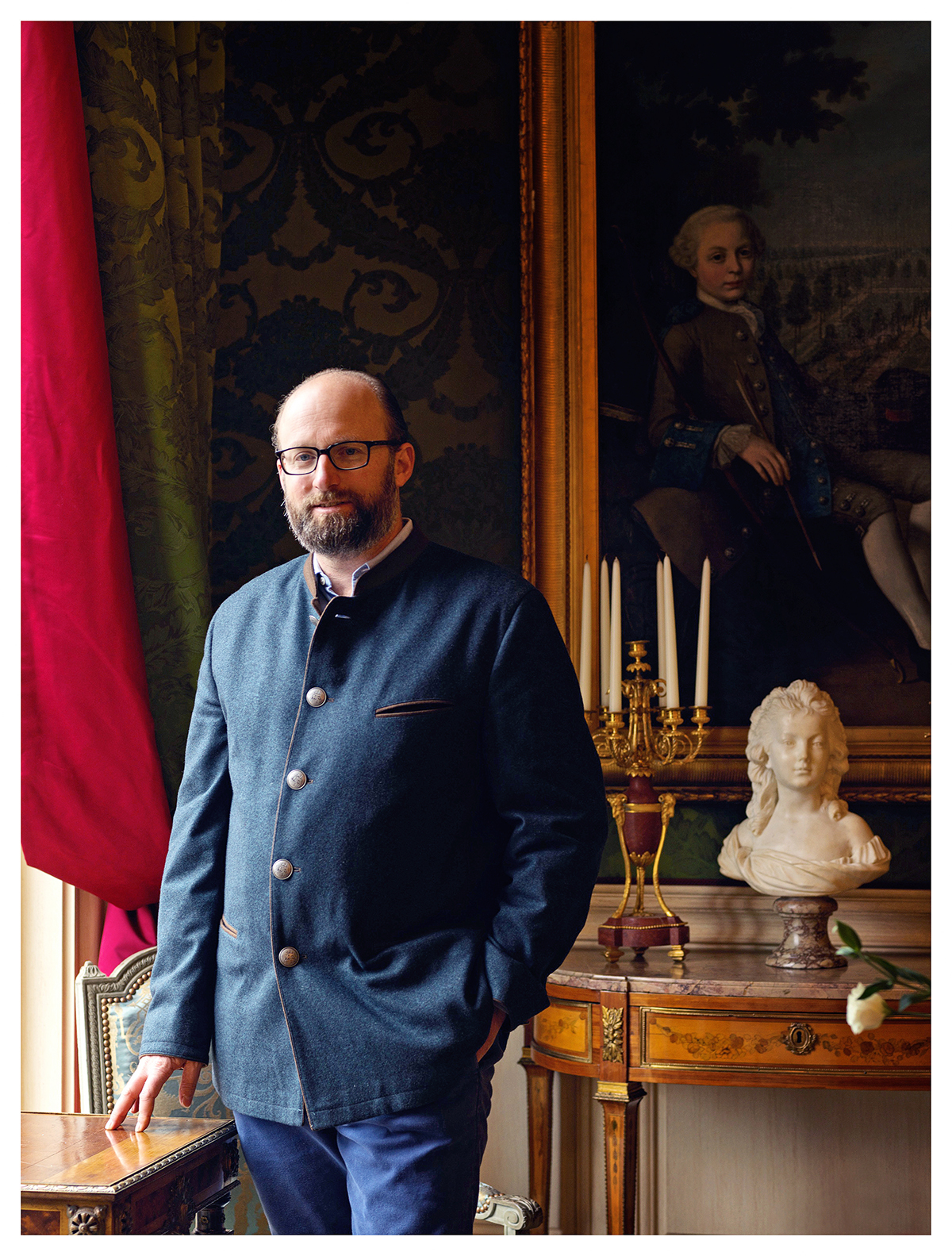
HRH Prince Robert of Luxembourg, the fourth-generation scion of the Dillon family to look after its winemaking legacy
The building was in a sorry state when the prince first stepped inside. Built in 1884 as an hôtel particulier (grand residence), it had been an ophthalmologist’s for many years and was in need of major renovation. Yet the prince could see it was the perfect private mansion to house the passions of Clarence Dillon – fine wine and gastronomy – in Paris. Over the next five years, he meticulously restored the courtyard, marble staircase and exquisite formal rooms. He designed the interiors by researching and imagining how each room would have looked in the past, sourcing 18th- and 19th-century furniture, paintings and carpets from auctions around the world. When builders discovered a vaulted wine cellar beneath the building, the prince resolved to open a fine-wine boutique, La Cave du Château, in the style of the grandest cellars of Bordeaux and Champagne, stocking Haut-Brion (which had been enjoyed by Samuel Pepys and Thomas Jefferson), along with other fine wines, spirits and secret vintages.
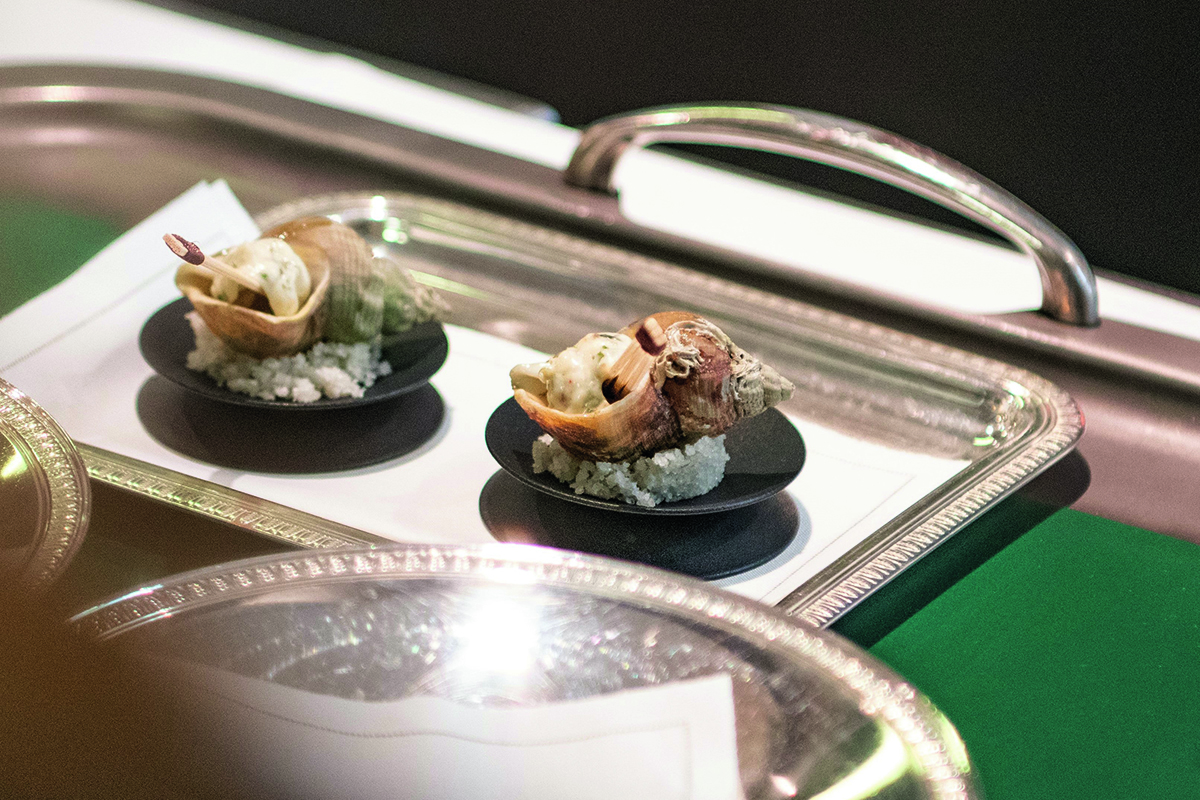
Seasonal, creative haute cuisine at Le Clarence
The prince knew, however, that it was people who would bring Le Clarence to life – in particular a head chef to recreate the ethos of Domaine Clarence Dillon in Paris. He was determined to find a chef with their own ideas, style and expertise who would bring a blast of modernity to this historic house. After many months of searching, Prince Robert came across Christophe Pelé through word of mouth; Pelé had worked at some of the best restaurants in France before shocking the gastronomy world in 2012 by closing his two-star restaurant, La Bigarrade, to focus on learning more of his art. Prince Robert invited Pelé to cook for him at Haut-Brion, where, along with creating a world-class gastronomy and wine library, he has installed a kitchen fit for Michelin star- winning chefs. First thing in the morning Pelé headed off to the local market, then spent the day creating a menu that combined ingredients from earth and sea; Prince Robert was so impressed by Pelé’s ingenuity and creativity that he invited him to collaborate right away.
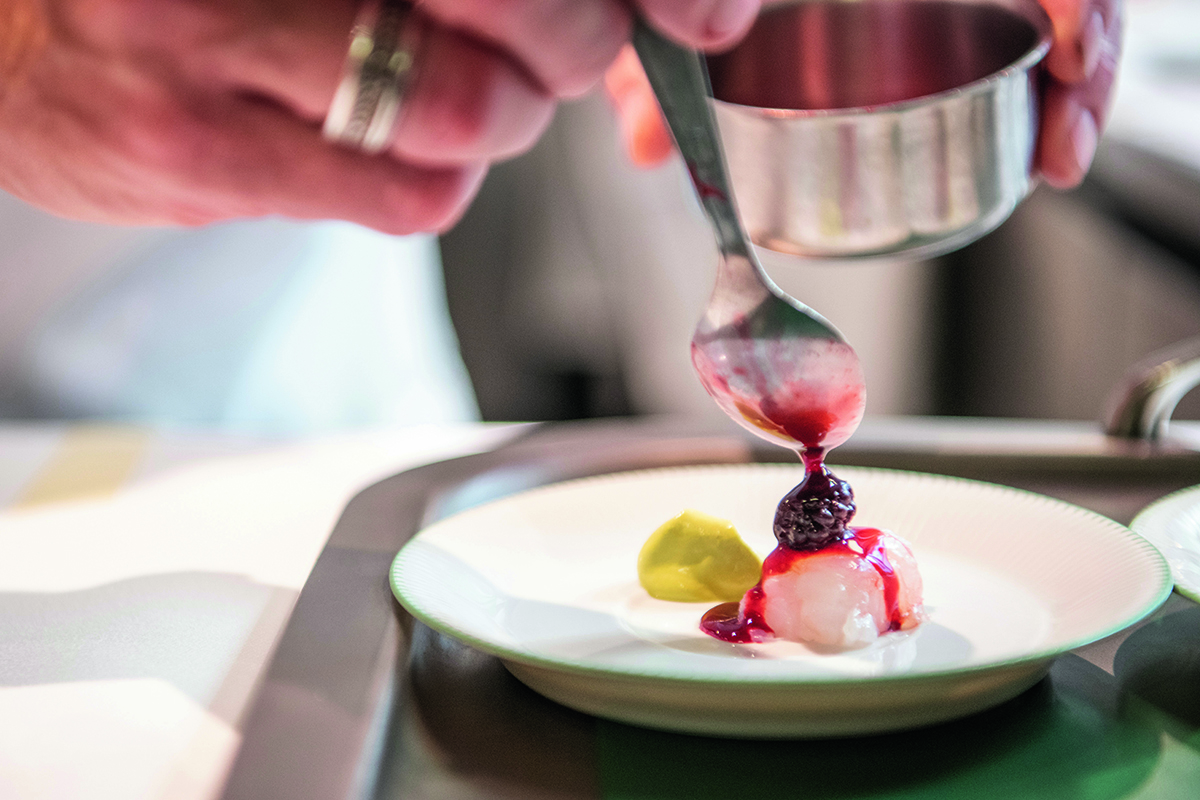
Le Clarence has earned two Michelin stars since its opening in 2017
By 2017, Pelé had earned Le Clarence two Michelin stars, adding the ranking of 28th best restaurant in the world in 2022. There is no formal menu: each artful dish is inspired by a classic recipe and prepared uniquely for each guest to express terroirs, cultures and seasons, and served with a number of smaller dishes to complement the flavours. Pelé, a horse rider and nature lover, devotes a huge amount of time to cultivating relationships with his favourite farmers and producers.
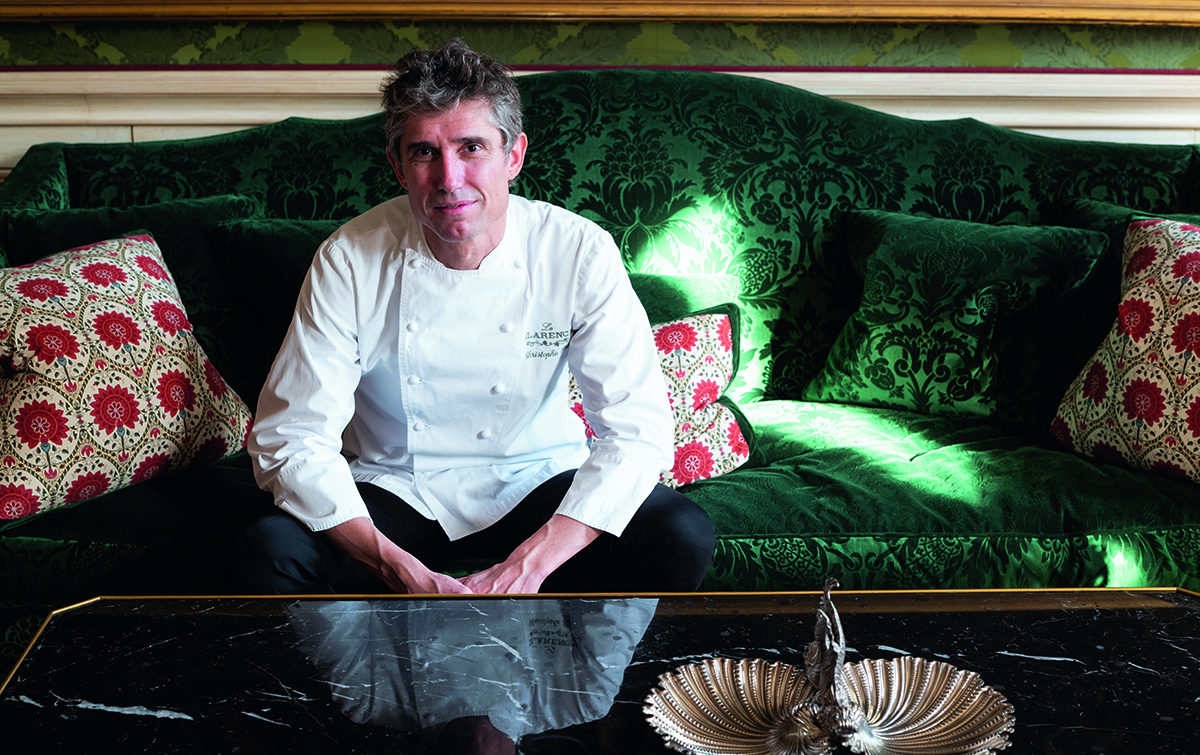
Head chef Christophe Pelé, who prizes classic service à la française alongside his modern cuisine
He is adamant that if his guests are to taste the seasons, he has to be great friends with his fishermen, farmers and suppliers. For example, Pelé works with family company France Ikejime for the freshest fish, while the organic sourdough is from local Parisian bakery Ten Belles. But while his cooking is unashamedly modern, Pelé’s presentation and service is resolutely traditional. “Some say that the art of service à la française is outdated, but what we offer is as relevant now as it always was: the extraordinary luxury of taking your time,” Pelé maintains.
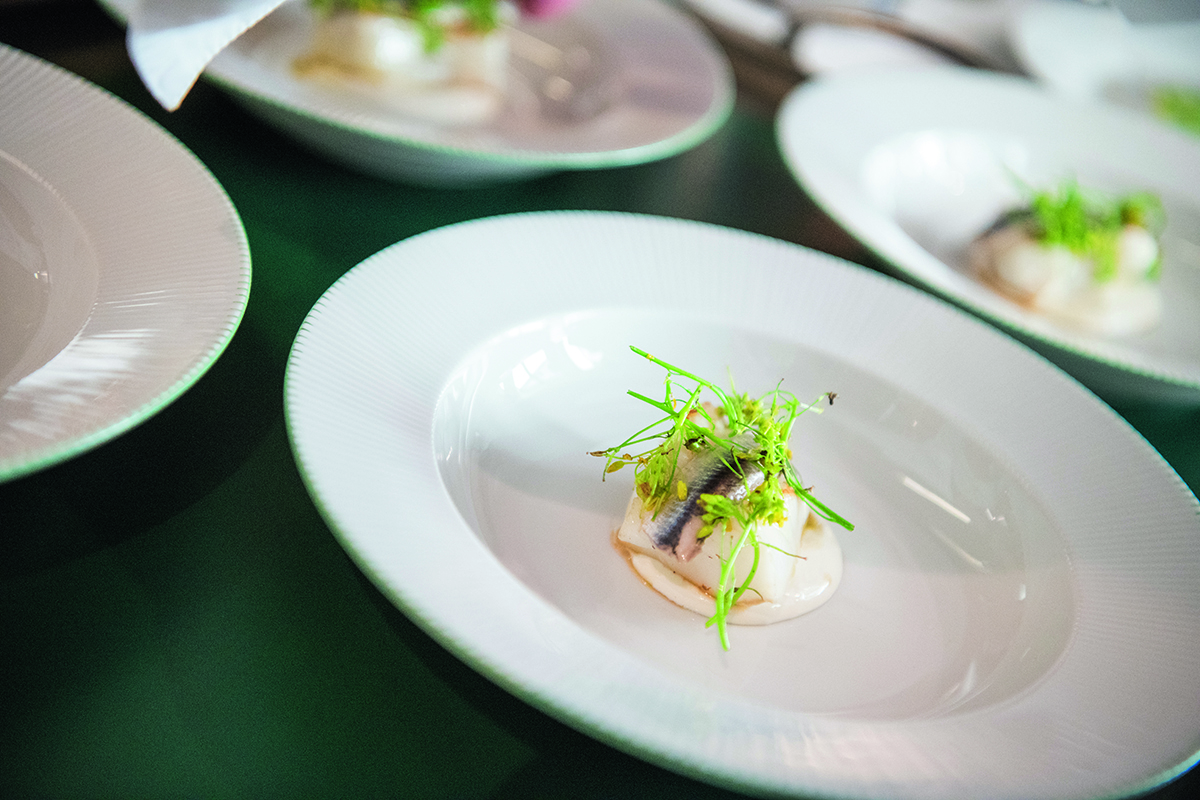
Le Clarence has achieved the rank of second finest restaurant in France
A little over 600km away from Paris on Bordeaux’s Right Bank, the staff at Château Quintus are also aware of the significance of time and deep-rooted relationships. In 2013, the prince expanded this newly named estate, where some of the vines, planted to Merlot, Cabernet Franc and Malbec, date back 100 years, with an average age of 30 years. In 2021, he added another venerable château. Along with Jean-Philippe Delmas and Jean- Philippe Masclef, Haut-Brion’s most senior winemakers, the prince has adopted the same vine-by-vine, plot-by-plot approach used at Château Haut-Brion and La Mission Haut- Brion. “At Haut-Brion there are centuries of knowledge; here we’re starting afresh but we have the fundamentals,” explains Delmas, who is the third generation of his family to be in charge of producing Château Haut-Brion wines. “Château Quintus is deeply rooted in the heritage of St-Émilion, one of the oldest vineyards in the world. Now we’re applying principles from our other properties to get the very best from this ancient terroir.”

Château Quintus vineyards, lined with trees and wildflowers to nurture the terroir and promote biodiversity
The prince set out his intention for Quintus to become the new star of St-Émilion when he commissioned a huge sculpture of a dragon to tower over an estate promontory. The outlook of Le Dragon de Quintus is nothing short of intimidating, as surrounding vineyards belong to the Grand Cru estates of Château Ausone, Château Angélus and Château Le Dome, as well as Château Berliquet and Château Canon, whose owners, Alain and Gérard Wertheimer, own Chanel. Yet the first vintages of Château Quintus have received critical acclaim. At a blind tasting with 28 top wine tasters in spring 2022 in London, three of the Quintus vintages were scored in the top 15 of 48 peer wines, with the 2016 Quintus ranking fourth. Of four perfect scores, three went to Quintus. It seems Prince Robert’s ingenuity is paying off. “The aim at Quintus is to make elegant wine in the spirit of Haut-Brion with typicity of St Émilion’s Right Bank,” explains Mariette Veyssière, manager of Quintus, who previously worked at both Haut-Brion and Pétrus, and whose father and grandfather are both cellar masters in St-Émilion. “The fact that there are 42 acres of vines on three orientations surrounded by oaks and acacia gives us a huge palette when it comes to the blending process.”
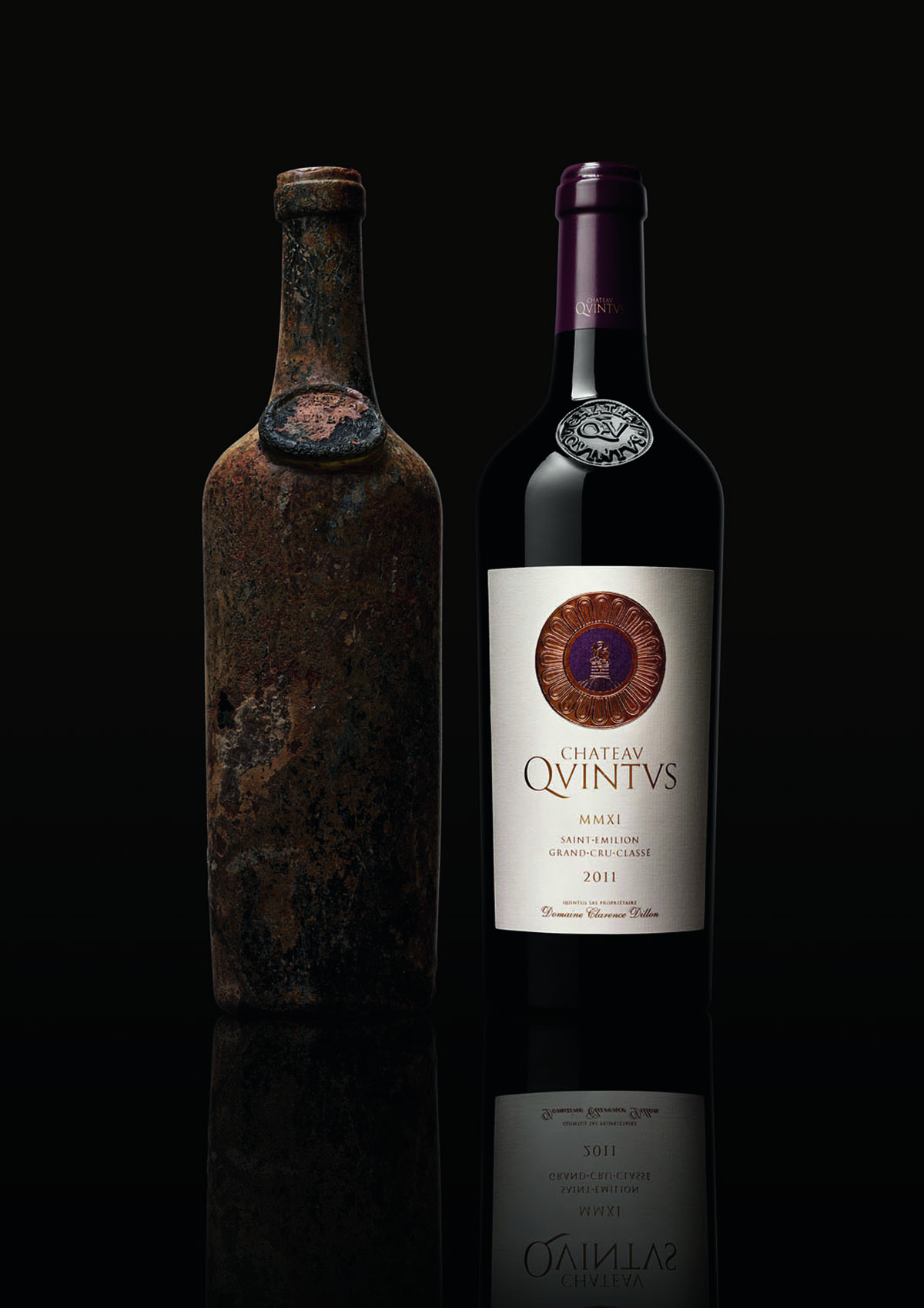
A first vintage of Château Quintus, 2011, with an antique Haut-Brion bottle found in a pirate’s cache
As a fourth-generation wine producer, Prince Robert is well aware that, to make the best wine, you need to nurture the terroir – not just for the next vintage but for the coming decades. “‘Terroir’ is a big word in France; it means more than just ground – it’s the whole ecosystem,” says Veyssière. “We are very gentle with it; not just with each vine but the whole terrain; we have to try to envisage what it will be like in 10 and 20 years time.” At Quintus, 800 types of auxiliary fauna with more than 80 species of wildflower have been recorded, as well as a profusion of bats, bees, insects and birds. Each year, parts of the vineyard are replanted, hedgerows are relaid and more trees and wildflowers are planted. No insecticides are used, and any ploughing is done with care to avoid soil erosion. “In order to have the best grapes, the vines have to suffer a little; at the top of the limestone slope where it is rocky there is a natural limitation to how much they can thrive, but where the soil is more sandy and fertile, we grow grass to prevent the vines from growing too vigorously,” Veyssière explains.
Read more: Prince Robert de Luxembourg on wine, gastronomy & storytelling
Harvest at Château Quintus is a painstaking three-week process with each plot (74 per cent Merlot, 24.3 per cent Cabernet Franc and 1.7 per cent Malbec) harvested by hand. “We’re gradually learning the soul of the plots and the grapes,” Veyssière continues. Once the grapes are off the vine, they’re sorted in terms of quality using a gravity sorting system: the best flow down into tanks: steel and concrete for Merlot and Malbec, oak for Cabernet Franc. Then, in November, an expert panel, including the technical teams from Haut-Brion and La Mission Haut-Brion, decide on the blending of Château Quintus and the second wine, Le Dragon de Quintus. Only afterwards will it be put into barrels. “We decide on the blend first to ensure the oak is not masking the berries’ potential,” says Veyssière. “We use a ratio of 35 per cent new oak, 65 per cent old, as the newer the barrels, the oakier the taste of the wine.”
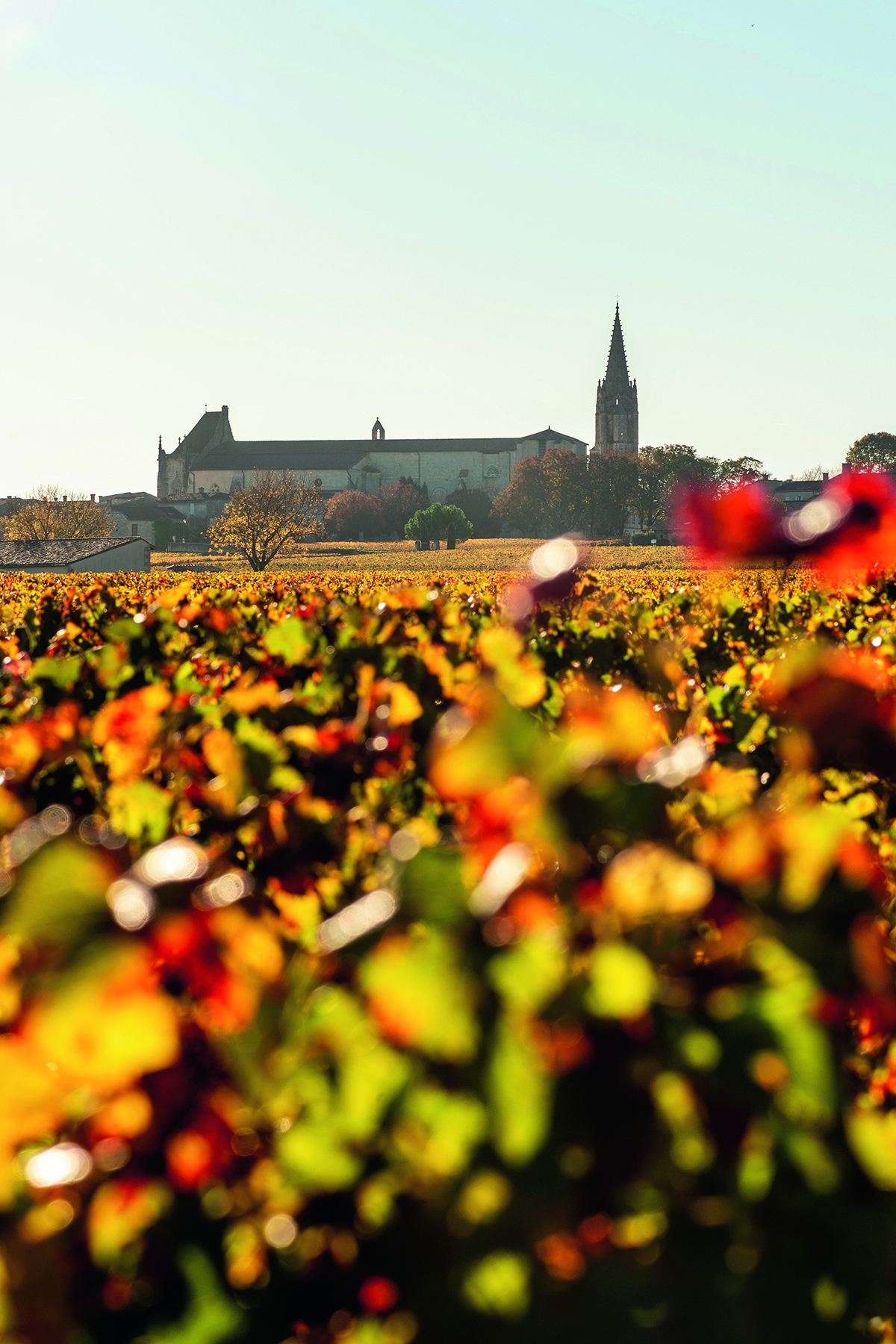
A view of Château Quintus looking towards the spire of St-Émilion church
For Prince Robert, who in 2018 joined Primum Familiae Vini, an association of the world’s most historic and celebrated wine-producing families, Château Quintus is a cherished fifth child, not only as it expands Domaine Clarence Dillon into St-Émilion but because it fulfils the wishes of his great-grandfather. Clarence Dillon had great affection for the ancient vineyards around St-Émilion, yet he never succeeded in buying a château there. Nine decades later, the Quintus estate, like Le Clarence, is a nod both to the past and the future of Domaine Clarence Dillon. “When Prince Robert is here, he likes to walk slowly through the vines and oak copses, taking it all in,” says Veyssière. “There’s no better place to catch up with his team than walking through the terroir with the butterflies and bees and the church spire of St-Émilion in the distance.”
Prince Robert on creating a new legacy
HRH Prince Robert of Luxembourg has been expanding the family business since taking over at the helm of Domaine Clarence Dillon, owner of Château Haut-Brion and other prestigious estates, in 2008. He speaks to Darius Sanai about the past, present and future.
On creating wine and gastronomic experiences
Wine is an experience. It has always been valuable only because it is something we share,
a shared experience. The fine-dining restaurant in Paris, Le Clarence, is part of that: we are bringing people into the heart of the world we have created. The style of the place is a reflection of the style of our Bordeaux château which I saw born around me when my mother redesigned and decorated it back in the early 1970s. I wanted to recreate that atmosphere in Paris. The cooking is totally different because it is hypermodern and the chef is innovative yet respectful of the ingredients. His cooking, to me, is close in style to the wines of Haut-Brion because it is subtle and elegant. It’s a composition. He treats all the contents of the plate in the same manner that our oenologues would the composition of the wine. You have a little bit of everything, but not too much of anything. It is a real art.

The group’s Le Clarence restaurant, with wine boutique La Cave du Château, elegantly housed in a renovated 19th-century Paris hôtel particulier
On building a new carbon-neutral winery at Château Haut-Brion in Bordeaux
The mandate I gave to the architects emphasised that it is not about a cult of personality, about the architect or about ego – whether that is the winemaker, the owner or the architect. We have an extraordinary story here, and we have to really put the focus on that and share it. It can’t be heavy-handed. The design element should not be too important, either. As much as I like Disney and am a big fan, we can’t recreate that kind of experience at Château Haut-Brion. It is like our wine and food: it has to be very subtle.
The carbon-neutral project was born 10 years ago, so we have been working on this with the architects. The technology we are using has improved significantly over that time, so we are going to be in better shape than we anticipated when we started, whether it is the geothermal energy we are using or solar cells. It is important for all of us and the planet, but especially important when you have a long-term vision of a family company that we represent. We are farmers, and our most important asset is our soil and our planet – without that we are nothing, so we have to look after it. I think that is why we see a lot of positive messaging coming out of this space. We are physically using our soil to build our buildings because the construction is going to be significantly made of rammed earth, so we are extracting our soil and we will have that reflected in the walls of our chai building. It is an exciting message, and we will literally be able to see quite gravelly soils within the actual walls. Some of it will be more traditional construction, but much of it will be rammed earth.
On creating a new St-Émilion first-growth wine, Château Quintus, on land that was previously three older properties
Creating a new name and brand ultimately means the promise of quality to the consumer. The reason for creating a new name is that we are not trying to make a better version of what was there before. We are making a totally different, better wine than all those estates. The selection process of the grapes for the wine is so drastically different compared to what was done beforehand. It is a totally different way of making this Right Bank wine. We are adopting the same kind of principles that we have at the Left Bank at Château Haut-Brion and Château La Mission Haut-Brion. It is daunting, but, ultimately, it is very exciting.
While the reconstruction of Château Haut-Brion continues, visitors can experience the group’s wines and hospitality at its new Pavillon Catelan, Bordeaux
Find out more:
domaineclarencedillon.com
le-clarence.paris
chateau-quintus.com
This article first appeared in the Autumn/Winter 2022/23 issue of LUX

